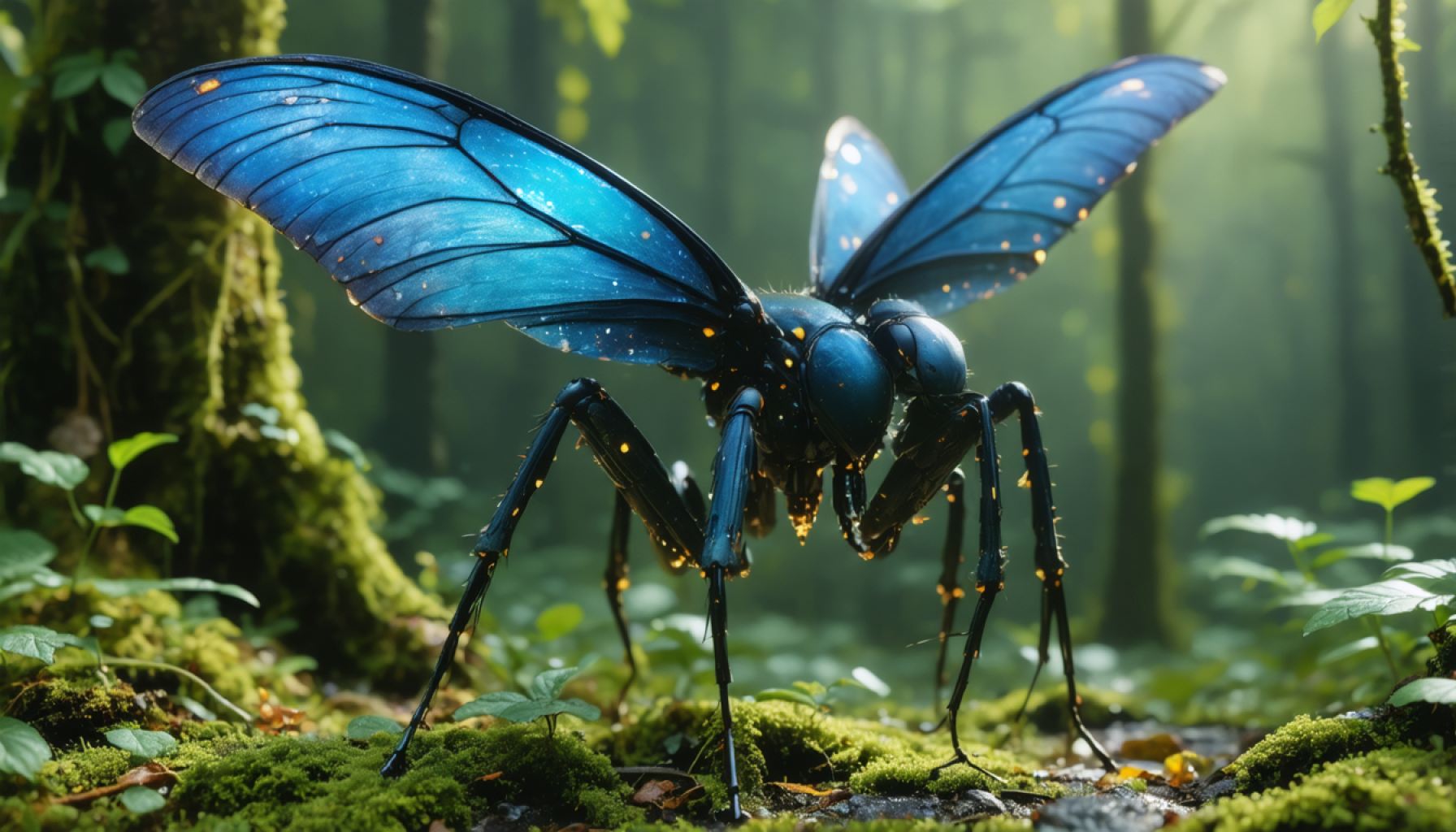- Innovative technology is increasingly inspired by nature, with biomimicry leading to groundbreaking solutions in various fields.
- Gecko-inspired adhesives demonstrate advanced applications of biomimicry, from medical dressings to reusable space technology.
- Butterfly wings’ light-scattering structures are used to develop energy-efficient, vibrant displays for screens and solar panels.
- Natural ecosystems are teaching sustainability, with algae biofuels and improved filtration processes mitigating pollution and emissions.
- Technology aids conservation efforts, using drones and AI to protect ecosystems and forecast natural disasters.
- Embracing nature as a mentor promotes sustainable innovation and strengthens the relationship between humanity and the environment.
Glance around your day-to-day world, and you’ll notice the intriguing intersection where technology and the natural world collide, crafting a narrative that reshapes our future. In laboratories and innovation hubs around the globe, scientists and inventors are looking to nature not just for inspiration, but as a collaborator in technological advancement.
Picture a gecko clinging effortlessly to a vertical surface. This little lizard, with its miraculous feet, has inspired a groundbreaking adhesive. By mimicking the microscopic structure of the gecko’s toes, researchers have crafted advanced tapes that adhere to walls, yet peel away without leaving a trace. This biomimicry is not a mere fascination—it’s a pathway paving solutions from medical dressings to reusable space technology.
The pristine wings of a butterfly, shimmering with iridescence, are not colored by pigments but by microscopic structures that scatter light. Scientists are harnessing this phenomenon to develop screens that consume less energy while providing vibrant clarity, potentially revolutionizing everything from smartphones to solar panels.
Our forests and oceans act as Earth’s natural lungs, and they’re teaching us valuable lessons in sustainability. Engineers are studying leaf structures and marine ecosystems to improve filtrations processes, reducing pollution and enhancing clean water access. Meanwhile, biofuels derived from algae promise a greener alternative to fossils, fueling vehicles with the same efficiency but fewer emissions.
Yet, it is not just about mimicking nature. Technology is returning the favor by protecting these ecosystems under threat from climate change and human exploitation. Drone technology watches over vast reserves, providing data to protect endangered species like never before. Artificial intelligence models predict and mitigate the impacts of natural disasters, safeguarding human communities and wildlife alike.
Embracing nature as a mentor rather than a resource shifts the paradigm of innovation. This symbiotic relationship doesn’t just lead to technological breakthroughs—it engenders a respect and understanding that is crucial if we are to inhabit this planet sustainably. In these vibrant exchanges, where inspiration flows freely between the living and the engineered, lies the key to a future where humanity and nature grow in harmony.
The takeaway is clear: look to nature not as a repository of miracles to exploit, but as a wise elder, full of lessons that, when heeded, have the power to transform the way we live on this planet.
Nature-Inspired Tech Innovations That Will Revolutionize Our Future
The Intersection of Technology and Nature
Nature-inspired technologies, also known as biomimicry, are revolutionizing our approach to innovation. From geckos and butterflies to algae and artificial intelligence, scientists are increasingly looking to the natural world for guidance to solve complex technological challenges. This symbiotic relationship offers vast potential, paving the way for sustainable and efficient solutions.
Insights and Predictions for Biomimicry in Technology
How-To Steps & Life Hacks
– Adhesives Inspired by Geckos: To harness the gecko’s ability, researchers focused on the microstructures of the gecko’s toes. These structures allow for versatile adhesives used not just in consumer products, but also potentially in medical and aerospace applications.
– Energy-Efficient Screens: By mimicking the structural coloration observed in butterfly wings, developers can create screens that consume less power while maintaining high picture quality. This innovation could reduce energy consumption across millions of devices.
Real-World Use Cases and Market Forecasts
– Biofuels from Algae: Algae-derived biofuels present a promising alternative to traditional fossil fuels. These biofuels can power vehicles with lower carbon emissions, contributing to reductions in global greenhouse gases.
– Improved Water Filtration: By studying natural filtration processes in leaves and marine ecosystems, engineers are developing more efficient water purification systems. This will have significant impacts in regions facing clean water scarcity.
– AI and Drone Surveillance: AI-driven predictions combined with drone surveillance protect ecosystems by tracking wildlife and monitoring habitats for illegal activities. This technology is crucial in conservation efforts to prevent poaching and deforestation.
Reviews & Comparisons of Emerging Technologies
– Gecko-Inspired Adhesives vs. Traditional Adhesives: These new adhesives offer reusability and leave no residue, unlike traditional tapes and glues, which can cause damage over time.
– Butterfly-Inspired Displays vs. LED Screens: Structural color displays promise lower power consumption, surpassing LED screens in energy efficiency and clarity in various lighting conditions.
Controversies & Limitations
– Ethical Concerns in AI: Use of AI in environmental monitoring raises privacy and ethical concerns, particularly regarding data collection and use.
– Economic Viability of Biofuels: The production cost of algae biofuels needs to be reduced to compete with traditional fossil fuels in the market.
Security & Sustainability
– Environmental Footprint: These innovations significantly reduce environmental footprints by offering sustainable alternatives and promoting conservation.
– Resource Efficiency: Technologies that replicate biological efficiencies contribute to lower energy and resource consumption.
Key Takeaways and Quick Tips
1. Embrace Biomimicry in Innovation: Draw inspiration from nature’s designs for efficient and sustainable technology development.
2. Support Sustainable Products: Choose products and technologies that support environmental sustainability, such as energy-efficient screens and biofuel-powered vehicles.
3. Stay Informed on Technological Trends: Keep abreast of nature-inspired innovations as they continue to evolve and affect various industries.
4. Advocate for Ethical Technology Use: Encourage responsible and ethical use of AI and drone technology in monitoring and conservation efforts.
For more information and updates on technological innovations derived from the natural world, visit BBC or Nature.
By learning from and emulating the natural world, we can drive technological advancements that honor and sustain our planet, ensuring a more harmonious future for all living entities.
